The Ather 450X – Gen 3 gets a larger battery pack and some other minor changes. We spend some time with the scooter to bring you a report on our experience with this EV scooter
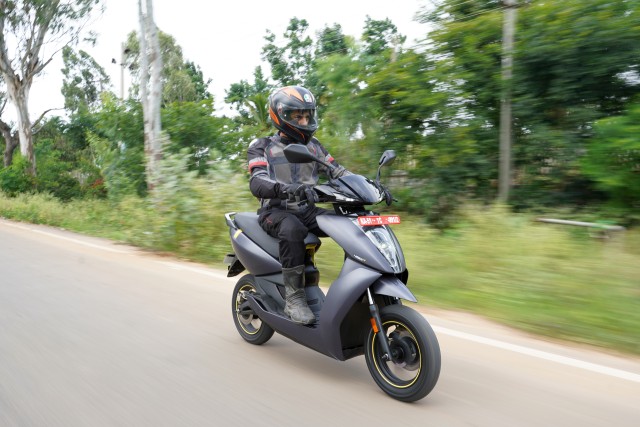
Story: Azaman Chothia
Photography: Apurva Ambep
Ather has been a popular EV brand in our market since its scooters were launched in 2018. In 2020, they launched the 450X with its most special feature being the Warp mode. With the heavy competition in the market, they have taken a step forward this year by offering the Ather 450X – Gen 3 sporting some minor updates to enhance the overall appeal of the product.
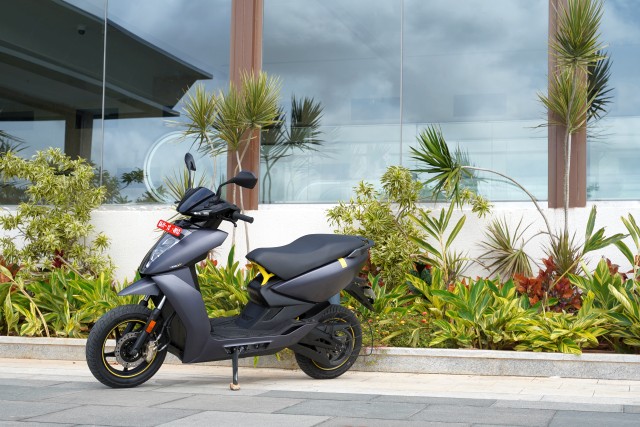
The team at Ather love the design of the 450X and has remained loyal to it by keeping it almost identical to the first-generation model that was launched. The sharp and futuristic design language is surely attractive, especially for those that would prefer a sporty-looking scooter. The only distinguishable change is that the scooter sports lighter mirror units that offer more visibility. Although not present on the unit that we were riding, the scooter also gets a side-step for more functionality. These two changes were made after listening to the feedback that they received from various customers. The scooter is still being offered in the same three shades – Space Grey, White, and Mint Green. Considering the picky nature of customers today, it would have been nice to see them offer some new colour options.
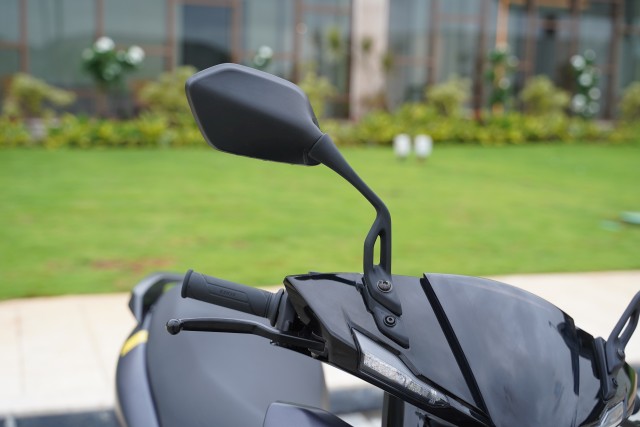
The main update comes in the form of a larger 3.7 kWh lithium-ion battery back that has increased the riding range of the scooter. The permanent magnet synchronous motor (PMSM) puts out a peak output of 6.0 kW (8.2 hp) and 26 Nm of peak torque which is the same as the previous model. This allows for a claimed acceleration time of 3.3 seconds from 0 – 40 km/h. Considering that the dimensions of the scooter are the same, Ather says that they have changed the mounting points in the floorboard to accommodate the slightly larger battery pack. This new battery has a certified range of between 116 km and 146 km which translates to a real-world riding range of between 85 km and 105 km depending on the mode it is being ridden in. With EV catastrophes on the rise, Ather has found solutions to avoid such incidents. They say that they have spaced the battery cells in a better way and even if one were to catch fire, all of the ones around will be protected, eliminating the chance of a disaster.
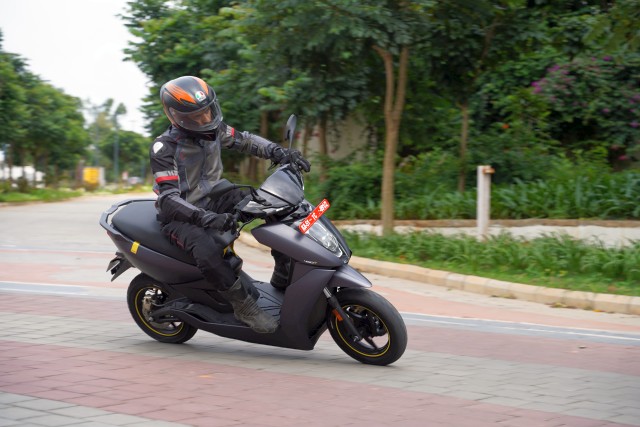
As for people wondering why this scooter still only provides around 100 km of range when the competition seems to be going to 200 kms, it is worth noting that scooters are small and do not have space to accomodate large cooling fans. Larger battery packs require better cooling solutions so Ather have tried to find the perfect balance between offering better range and keeping the battery pack stable to avoid a fire.
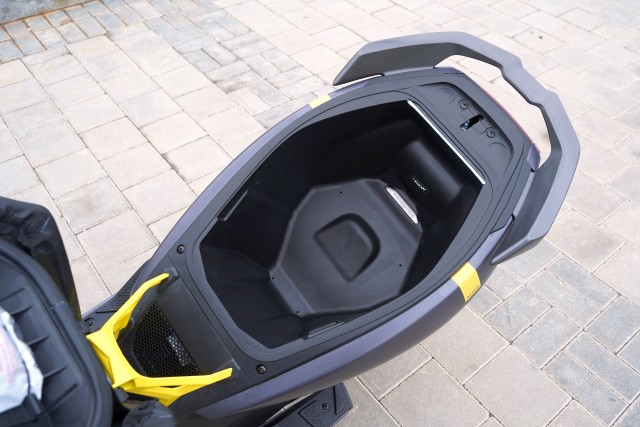
While I have not been impressed with many EV scooters, this one was actually fun to ride. They have got the throttle calibration right which made it a smooth sailing experience and the sharp feedback from the disc brakes with CBS makes it come to stop in an instant. On a long and open stretch of road, I was able to do a respectable top speed of 91 km/h and the scooter clocked the same top speed even with a pillion on board. In Warp mode, the scooter is extremely quick but provided me with a lot of confidence. The suspension setup is on the stiffer side to keep in tune with the sporty theme of the scooter so don’t expect to be tackling bumps and undulations comfortably. What has further enhanced the ride quality of the scooter is a set of new tyres from MRF. They are called the Zapper N where the front gets a 90/90 section tyre and a 100/80 section tyre at the rear. To keep safe at all times and to get the most out of the scooter, Ather is offering a Tyre Pressure Monitoring System (TPMS) that can be purchased for an additional cost.
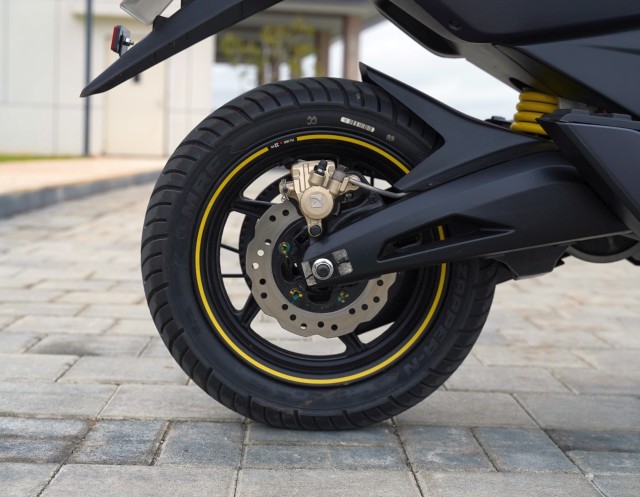
With everyone having major anxiety about riding range, their internal research has shown that most people were riding the scooter in Eco mode. To enhance the experience, they have retuned the mode and renamed it ‘Smart Eco’ to offer more performance, while hardly compromising on the range. From all the cities that they are present in, their research states that people are riding for not more than 30 kilometres a day. With the larger battery, it means that they will only have to charge their scooter once in a span of three days.
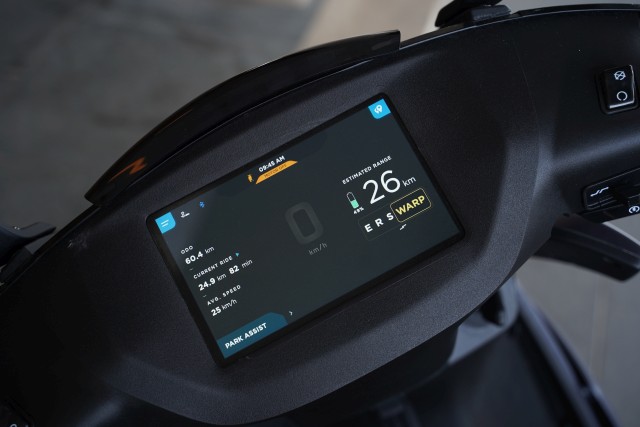
Even though the battery is slightly larger, Ather says that it charges slightly quicker than before and riders will get approximately 1.5 km/minute (0-50 %) while fast-charging their scooter. With the charging dock that comes with the scooter, it will charge 0 to 80 % in 4 hours and 30 minutes, while 100 % will take 5 hours and 40 minutes. We did have the scooter for a short period with no way of testing charge times so it is something that we will talk about in a detailed road test. The seven-inch, touchscreen TFT LCD unit has been slightly tweaked for better performance. It makes use of the same Snapdragon 212 quad-core 1.3-GHz processor but now gets 2 GB of RAM compared to 1GB of RAM that was present in the older model. This has made the touchscreen unit smoother to use and increased space for over-the-air updates and more applications to run simultaneously. Ather are also offering storage solutions in the form of two all-weather bags. One of them is attached to the front and the larger one sits behind the rider and is fastened under the seat.
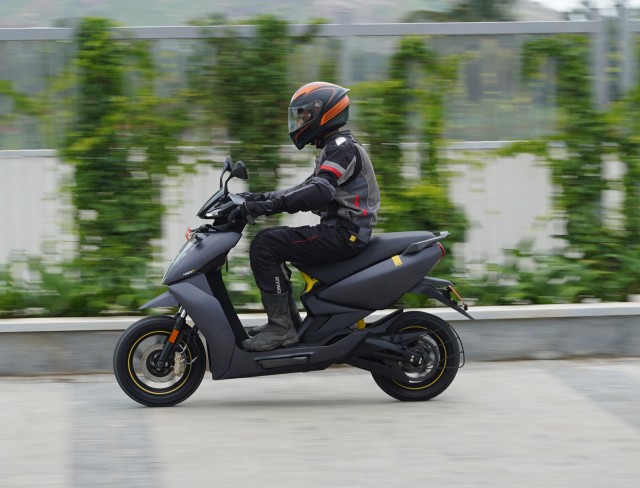
With this Gen 3 model, Ather has clearly been listening to the wants and needs of its customers. With good build quality, a well-calibrated throttle, sharp handling, and new features that have enhanced the functionality, it has surely become an even more exciting proposition to own for everyday city use. The pricing for the Gen 3 model varies between 1.50 lakh and 1.57 lakh (ex-showroom prices) depending on the city it is purchased in. Listed below is the detailed pricing.
Mumbai – Rs 1,49,934
Pune – Rs 1,46,340
Delhi – Rs 1,39,007
Hyderabad – Rs 1,57,402
Chennai – Rs 1,57,507
Ahmedabad – Rs 1,37,612
Jaipur – Rs 1,46,401
Kochi – Rs 1,57,402


Leave a Reply